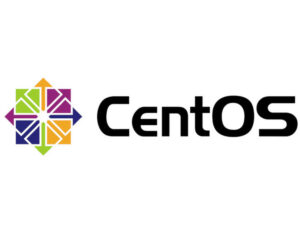Installing Chef is a challenge, but with a bit of help, you can get it up and running in no time. Jack Wallen shows you how.

Image: iStockphoto/gorodenkoff
Chef is a configuration management tool to assist you in the setup of machines on physical hardware, virtual machines, or in the cloud. Written in Ruby and Erlang, Chef uses a domain-specific language for writing system configuration recipes. With these recipes you are able to, by treating Infrastructure as Code, configure numerous machines at once.
Chef is used by the likes of Facebook, Etsy, Cheezburger, and Indiegogo, so it’s a solution that has been proven to work.
I’m going to walk you through the process of installing the Chef Server and Client on Ubuntu 20.04. Recipes are created on the Chef Client and are then distributed via the Chef Server. I will be demonstrating the installation on Ubuntu Server 20.04.
You can always install the client on a desktop machine if you like–especially for instances where your Chef admins need a GUI to work with. For larger deployments, where you might have numerous admins and developers working with Chef, you’ll install one Server and multiple Clients.
SEE: Nextcloud Hub: User tips (free PDF) (TechRepublic)
What you’ll need
How to install the Chef Server
The first thing we’ll do is install the Chef Server. To do this, log in to your Ubuntu Server 20.04 instance and download the server core with the command:
wget https://packages.chef.io/files/stable/chef-server/13.1.13/ubuntu/18.04/chef-server-core_13.1.13-1_amd64.deb
Once that file downloads, install the package with the command:
sudo dpkg -i chef-server-core_*.deb
After the installation completes, start the Chef Server services with the command:
sudo chef-server-ctl reconfigure
Now, we need to create a new directory that will house the security keys. Do this with the command:
mkdir ~/.chef
Next, we create a new user, as well as the key file for that user. Issue the command:
sudo chef-server-ctl user-create USERNAME FNAME LNAME EMAIL 'PASSWORD' --filename ~/.chef/USERNAME.pem
Where:
-
USERNAME is the username for the new user
-
FNAME/LNAME are the first and last names of the user
-
EMAIL is the email address of the new user
-
PASSWORD is a strong, unique password for the new user
With the new user created, it’s time to create an organization. At the same time, we’ll add the new user to the admins and billing admins security groups. This is done with the command:
sudo chef-server-ctl org-create ORGNAME "ORGFULLNAME" --association_user USERNAME --filename ~/.chef/ORGNAME.pem
Where ORGNAME (which must be in all lower case) is the organization name, ORGFULLNAME is the full name of the organization, and USERNAME is the name of the new user you just created.
And that’s it for the Server installation.
How to install the Chef Client
Log in to your client machine and download the necessary file with the command:
wget https://packages.chef.io/files/stable/chef-workstation/20.6.62/debian/10/chef-workstation_20.6.62-1_amd64.deb
Once the file download completes, install the software with the command:
sudo dpkg -i chef-workstation*.deb
Next, create a repository on the client with the command:
chef generate repo chef-repo
Create a subdirectory within the repository, that will house the knife configurations, with the command:
mkdir ~/chef-repo/.chef
Change into that newly created repository with the command:
cd ~/chef-repo
How to generate RSA keys and copy them to the server
If you don’t already have RSA keys on the client machine, generate them with the command:
ssh-keygen -b 4096
Upload the new key to the server with the command:
ssh-copy-id USER@SERVER
Where USER is the username that generated the keypair and SERVER is the IP address of the server.
How to copy the PEM files from your server to your client
Next, we must copy the PEM files from the server to the client. This is done from the server with the command:
scp USER@CLIENTIP:~/.chef/*.pem ~/chef-repo/.chef/
Where USER is the username that generated the PEM files and CLIENTIP is the IP address of the client machine.
How to add version control
Now we’re going to version control into the mix, so you can easily track changes with your cookbooks. If you don’t already have Git installed on your client, do so with the command:
sudo apt-get install git -y
When the installation completes, configure Git with the following two commands:
git config --global user.name NAME git config --global user.email EMAIL
Where NAME is your name and EMAIL is your email address.
Add the .chef directory to gitignore with the command:
echo ".chef" > ~/chef-repo/.gitignore
Change into the repository with the command:
cd ~/chef-repo
Add and commit the files with the commands:
git add . git commit -m "Initial Commit"
How to generate your first cookbook and configure knife
The next step is to generate your first cookbook with the command:
chef generate cookbook my_cookbook
Once that completes, you’ll then need to create a knife configuration file with the command:
nano ~/chef-repo/.chef/config.rb
In that file, paste the following:
current_dir = File.dirname(__FILE__)
log_level :info
log_location STDOUT
node_name 'USER'
client_key "USER.pem"
validation_client_name 'ORGNAME-validator'
validation_key "ORGNAME-validator.pem"
chef_server_url 'https://SERVER/organizations/ORGNAME'
cache_type 'BasicFile'
cache_options( :path => "#{ENV['HOME']}/.chef/checksums" )
cookbook_path ["#{current_dir}/../cookbooks"]
Where:
-
USER is the username that generated the client key
-
ORGNAME is the organization name you created
-
SERVER is either the hostname or the IP address of the Chef server
Save and close the file.
Change into the chef-repo directory with the command:
cd ~/chef-repo
Fetch the SSL files from the server with the command:
knife ssl fetch
How to bootstrap a node
The final step is to install and validate the client on the server. Before you do that, you need to edit the hosts file on the client machine with the command:
sudo nano /etc/hosts
In that file add the IP address/hostname of your Chef server in the form of:
192.168.1.17 eaonvm
Make sure to use your server’s IP address and hostname. Save and close the file.
Change into the .chef directory with the command:
cd ~/chef-repo/.chef
To bootstrap the node, issue the command:
knife bootstrap SERVER -x USER -P PASSWORD --node-name NODE
Where:
-
SERVER is either the hostname or the IP address of the Chef server
-
USER is the user you’ve been using
-
PASSWORD is the password for USER
-
NODE is the name of the node
It can get a bit tricky here. If the bootstrapping fails, chances are it’s because of how you generated the PEM files. If you used a hostname for the PEM file (instead of an IP address), you’ll need to use the hostname for the bootstrapping.
Once the bootstrapping succeeds, you can verify with the command (run on the client):
knife client list
You should see returned ORG-validator (where ORG is the name of the organization you created).
And that’s it. You’re now ready to start creating cookbooks and using them to configure machines on your network.
Also see
Source of Article



